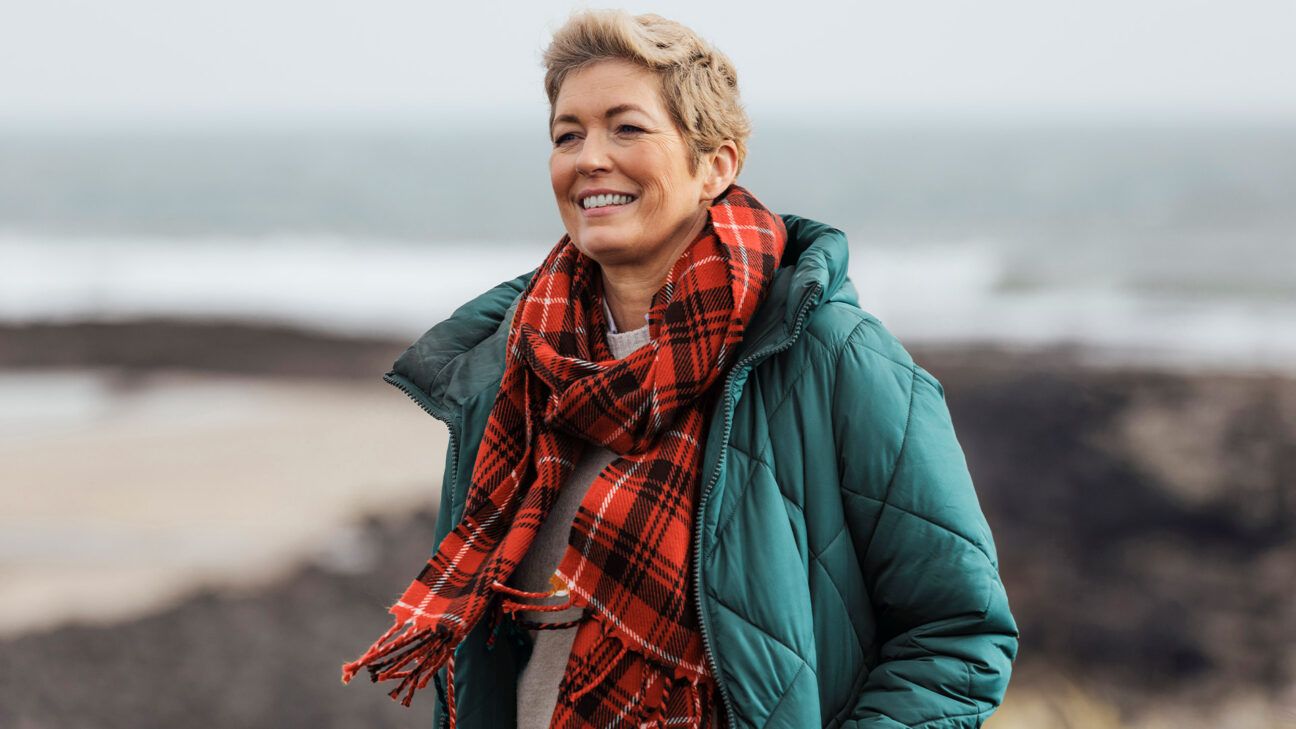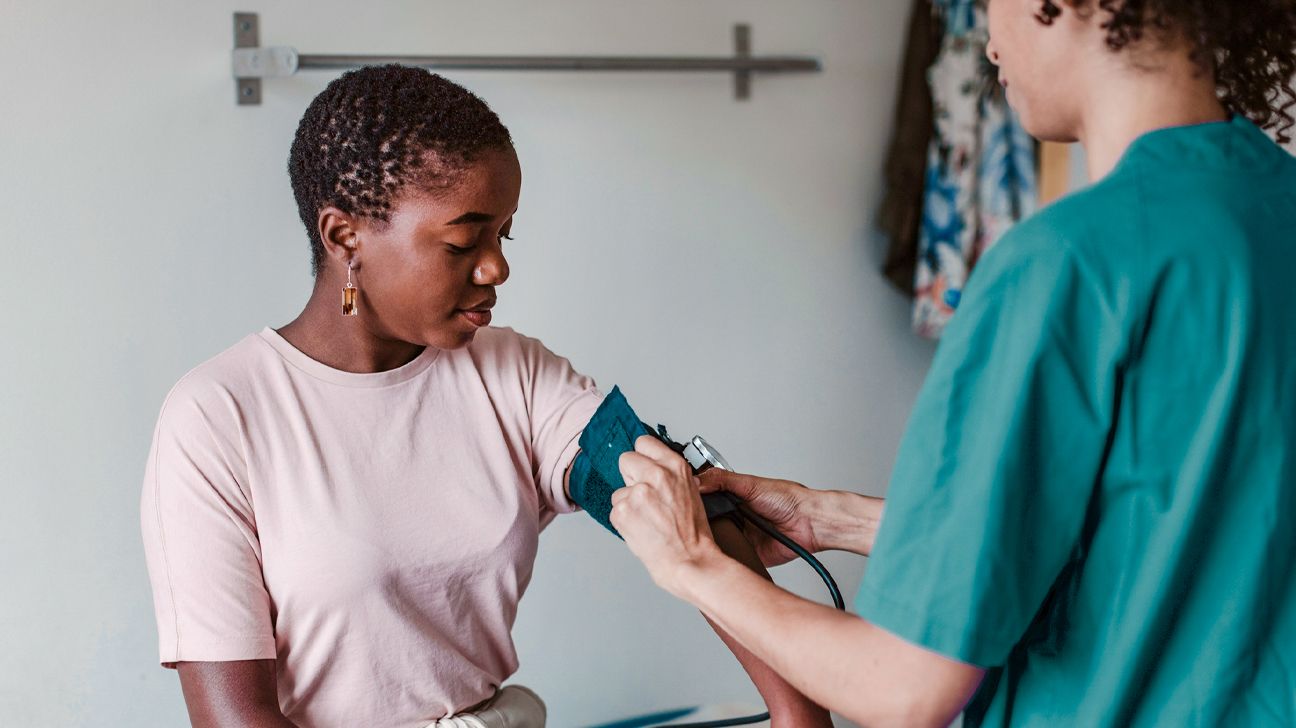Can Hearing Loss Predict Dementia or Parkinson’s? The subtle decline in our…
Content source – www.soundhealthandlastingwealth.com

Staying active and limiting sedentary time is essential to reducing the risk of cardiovascular disease (CVD), but little research exists to show its effects in older female cancer survivors.
Now, researchers have found compelling evidence that getting more daily physical activity has a robust protective effect on heart health for this group.
Moderate daily exercise — through exercise sessions or hitting daily step goals from walking — significantly reduced the risk of death from cardiovascular disease in postmenopausal cancer survivors.
The preliminary research was presented at the American Heart Association’s Epidemiology and Prevention | Lifestyle and Cardiometabolic Health Scientific Sessions 2025 March 6–9, and has not yet been peer-reviewed or published.
In another promising development from the study, researchers found that exercising at levels below current recommendations showed significant benefits, underscoring that every little bit counts when it comes to exercise.
The findings are essential for the long-term health of cancer survivors, who are at increased risk of CVD compared to other adults.
“While health benefits were maximized at 60 min [per] day of moderate-to-vigorous physical activity and around 5,000–6,000 steps/day, there were substantial health benefits evident at amounts below these levels,” Eric Hyde, PhD, MPH, a research analyst at the University of California, San Diego, and presenter of the research, told Healthline. “Encouraging cancer survivors to sit less and take more steps may help promote long-term survival.”
Hyde and his team utilized accelerometer data from nearly 2,500 female cancer survivors to see how daily exercise affected all-cause and CVD-related mortality risk.
That data resulted from two studies conducted between 2011 and 2015 and an additional four years of follow-up, collectively known as the Women’s Health Accelerometry Collaboration.
The females involved in those studies were between the ages of 63 and 99, with an average age of 74. They wore a fitness tracker for at least 10 hours per day for up to one week. The device recorded bouts of exercise, step count, and sedentary behavior.
The cohort experienced different forms of cancer, the most prominent of which were breast (52%), endometrial (8.5%), and malignant melanoma (7.1%). Other cancers included:
When Hyde examined the association between physical activity data from the exercise trackers and mortality, those who exercised or walked more had significantly better health outcomes. Engaging in one hour per day of moderate to vigorous physical activity lowered the risk of death by 40% and the risk of death linked to CVD by 60%.
CDC guidelines and the AHA recommend that adults get at least 150 minutes of moderate-intensity physical activity weekly.
If you count your physical activity in steps rather than time spent exercising, the greatest benefit was seen in participants who clocked 5,000-6,000 steps per day, lowering the risk of death by 40%.
Note this is well below the more commonly touted 10,000 steps per day, a myth that’s been somewhat debunked since the optimal number may depend on your age.
However, the study did find additional benefits of more walking: each additional 2,500 steps per day was associated with a 34% further reduction in the risk of death from CVD.
On the other hand, sedentary behavior was linked to worse health outcomes. For every 102 minutes of sitting per day, participants’ risk of death from all causes increased by 12%, while the risk of CVD-related death jumped by 30%.
“In the past, clinicians used to advise cancer patients to rest and avoid activity when possible,” Hyde said.
“However, the evidence is now clear that those with a history of cancer can greatly benefit from being more physically active. There needs to be increased awareness of the importance of moving more and sitting less among cancer survivors.”
Keith Diaz, PhD, an associate professor of behavioral medicine at Columbia University Medical Center and member of the AHA’s Physical Activity Science Committee, not involved in the study, told Healthline that prioritizing health and time management is essential for hitting your daily activity goals.
“We work, we care for kids, we upkeep our living spaces. Yet some find the time for exercise and others don’t, said Diaz. “Instead of thinking of exercise as a structured activity that requires a dedicated time slot, it can help to integrate movement into the daily rhythms of your life.”
Diaz recommended various strategies that can help integrate more activity and less sitting into your daily routine. They include:
Eleanor Levin, MD, a clinical professor of cardiovascular medicine at Stanford Medicine, recommended exercising with a social group, such as a walking club, to stay motivated. Levin wasn’t involved in the new research.
Fatigue is a common problem for cancer survivors, so while exercise may seem even more strenuous to begin with, it will help to relieve this common symptom in the long run.
“Paradoxically, regular physical activity is one of the most effective ways to increase energy levels. Even small amounts of exercise can create a positive feedback loop — where exercise improves conditioning, reduces fatigue, and makes future physical activity feel easier,” said Diaz.
Among postmenopausal female cancer survivors, one hour of moderate exercise or 5,000 steps per day significantly reduced the risk of death from all causes and cardiovascular disease, new research shows.
On the other hand, every 102 minutes spent sitting per day was associated with a 30% increased risk of death from cardiovascular disease.
When it comes to exercise, every bit counts. Benefits have been identified even when exercising less than current guideline recommendations.
Adding 2,500 Daily Steps May Improve Heart Health In Female Cancer Survivors Read More »

Probiotics reduced negative mood in a new clinical trial, adding to mounting evidence that the gut-brain connection plays a crucial role in mental health.
In the randomized, double-blind, placebo-controlled study, researchers observed that participants began feeling mood improvements within about two weeks of taking probiotics.
Because the study involved healthy adults — not just people with diagnosed depression — the findings suggest probiotics could benefit mental health across the general population.
The results were published on April 9 in the journal npj Mental Health Research.
The researchers noted their use of daily mood tracking may have helped detect subtle improvements that other mental health assessments could miss.
“This is the first study to implement daily mood monitoring to assess the effects of probiotics, and in fact, by the end of the month-long study, their negative mood still appears to be improving,” Katerina Johnson, PhD, first author of the study and a research associate at the University of Oxford in the United Kingdom, told Healthline.
The study adds to growing interest in the gut-brain connection, a complex communication system that is thought to influence mood and emotions between the gut and the brain.
The gut produces a large amount of serotonin (about 95%), a neurotransmitter involved in everything from mood to appetite. This suggests that improving gut health could positively impact mental health.
Researchers conducted a comprehensive study involving 88 healthy volunteers with an average age of 22. Participants in the study were not overweight, which was based on their body mass index (BMI). They also did not engage in excessive drinking, nor drug use.
Once enrolled, participants were randomly assigned to receive either a multispecies probiotic mixture or a placebo for 28 days.
The probiotic mixture contained nine bacterial strains, including various Bifidobacterium, Lactobacillus, and Lactococcus species. Participants consumed one 2-gram sachet daily dissolved in lukewarm water.
The researchers administered a comprehensive battery of validated psychological questionnaires before and after the four-week intervention, including measures of anxiety (STAI), worry (PSWQ), depression (CES-D), and negative affect (PANAS).
Despite this thorough approach, these standard psychological assessments detected minimal differences between the probiotic and placebo groups.
However, daily mood reporting told a different story.
This daily monitoring revealed the study’s most significant finding: participants who received probiotics showed a reduction in negative mood starting around the two-week mark, while those on placebo showed no such improvement.
“By monitoring people daily, rather than just assessing them before and after, it gives us a much better resolution of changes over time when taking probiotics,” Johnson said.
“One disadvantage with psychological questionnaires is that they attempt to dissect how people are feeling into discrete categories, e.g., stress, anger, anxiety, or depressive tendencies. In contrast, asking how positive or negative someone is feeling can holistically capture a change in any emotional state,” she explained.
These findings suggest that probiotics can benefit mental health even in generally healthy populations and that common research methods may miss these effects. Interestingly, the improvements in negative mood didn’t affect positive mood, which remained unchanged in both groups.
“We certainly understand that while we’ve had treatments for depression and anxiety for years, they’re sometimes not the right fit for an individual,” Lisa Durette, MD, chair of psychiatry at the Kirk Kerkorian School of Medicine at the University of Nevada Las Vegas, told Healthline. Durette wasn’t involved with the research.
“Opening up the discussion around other ways for us to help our patients and taking a more holistic approach is a very good thing,” she noted.
“If you look at the way in which individuals report antidepressants affecting themselves, a lot of patients will say they feel like they are emotionally blunted. They can’t feel the highs and the lows as well as I could without medication. But there was no blunting identified with these probiotics, which I think is interesting,” Durette continued.
According to the study authors, if probiotics could simultaneously reduce negative mood without reducing positive mood, that would prove to be a “notable benefit.”
The researchers also found that certain individuals might respond better to probiotics than others. Specifically, as measured by psychological questionnaires, individuals with higher baseline risk aversion showed the greatest improvement in negative mood when taking probiotics.
Despite the promising results, experts caution that probiotics are not a substitute for psychiatric medication or therapy.
Probiotics may be a helpful addition to a broader mental health strategy, but they shouldn’t replace proven treatments for conditions like depression or anxiety.
“The results from this study underline that probiotics are certainly not sufficient as a standalone solution in the prevention and treatment of mental illness,” Christoph Thaiss, PhD, assistant professor of pathology at Stanford University, told Healthline.
“It is also important to remember that probiotics are available as nutritional supplements that do not undergo the same rigorous testing for efficacy as FDA-approved drugs,” he added.
Thaiss wasn’t involved in the research but noted that “probiotics could play an important supportive role in the clinical management of mood disorders.”
Durette shared that holistic practices, including diet, exercise, and probiotic supplementation, have a rightful place in mental health treatment as long as people are informed of all the potential risks and benefits.
“It may be helpful for you to supplement what you’re doing with a prebiotic or a probiotic or be more mindful of having more whole foods that could increase healthy gut microbiome organisms,” said Durette.
Still, Durette acknowledged that more research in this area is needed. “We don’t know enough yet to determine whether or not these interventions should be a substitute for a traditional treatment,” she said.
Can Probiotics Improve Your Mood? Study Offers New Clues Read More »

Bacterial vaginosis (BV) is a common vaginal infection affecting nearly 1 in 3 females globally with strong recurrence rates.
While the emphasis on treatment has focused on females, a new study suggests that sexual partners should also be treated for the condition that researchers say fits the profile of a sexually transmitted infection (STI).
BV infection may develop following exposure to a new sexual partner without a condom or other barrier method. Reinfection or recurrence following treatment is associated with exposure to a regular sexual partner.
During sexual intercourse, bacterial vaginosis-associated organisms are exchanged between partners, the researchers found.
When female and male sexual partners were treated for BV, recurrence rates were lower. Females received first-line antimicrobial agents, and males were administered combined oral and topical antimicrobial therapy. Researchers say this combination therapy contributed to the lower BV recurrence rates in females within 12 weeks.
These findings suggest that including male partners in treatment for BV could improve treatment success and potentially lead to a cure. The study was published on March 5 in The New England Journal of Medicine.
“Clinicians and researchers with similar views have undertaken partner treatment trials in the past, but none failed to reduce recurrence or improve BV cure for women,” said study co-author Catriona Bradshaw, PhD, of the Melbourne School of Population and Global Health at the University of Melbourne, Australia.
“This was in part due to trial limitations, but we also believe this may be because they all used oral antibiotics for men only,” Bradshaw told Healthline.
Although BV is both treatable and curable, around 50% of females experience recurrence within six months after antibiotic treatment, which may raise the risk of obstetric complications down the road.
When there is a regular sexual partner, the risk of BV recurrence increases three-fold.
Experts haven’t considered BV an STI because the bacteria typically originates from within versus sexual transmission. However, as the new study points out, this isn’t always true.
Prior research has shown that men carry bacterial species linked to BV in the urethra and penis.
To show that BV fits the profile of an STI, researchers collected a body of evidence that Bradshaw described as a journey 20 years in the making.
The randomized controlled trial involved 164 heterosexual monogamous couples in which the female had bacterial vaginosis.
The partner-treatment group involved 81 couples. Female partners received first-line antimicrobial treatment, and male partners received combined oral and topical antimicrobial therapy (metronidazole 400-milligram tablets and 2% clindamycin cream applied to penile skin) twice daily for 7 days.
“We believed it was important to try and target the bacteria on the penile skin with a topical antibiotic cream as well as inside the urethra with an oral antibiotic,” Bradshaw explained. “This had never been done before.”
The control group had 83 couples, in which females received the same standard of care and males received no treatment. The primary outcome was BV recurrence within 12 weeks.
The trial was stopped at the 12-week follow-up mark because the female-only treatment was inferior to treating both partners.
In the both-partner treatment group, BV recurrence occurred in 35% of females compared to a 63% recurrence rate among females in the control group.
Adverse events in male partners receiving treatment were mild and included:
“We are relieved that this treatment strategy has been so effective,” Bradshaw said.
“It enables us to understand that reinfection of women with BV bacteria from men is responsible for a large proportion of BV recurrence in women. The treatment is easy and well tolerated and only needs to be taken for a week.”
Bradshaw noted that more studies in diverse populations and settings are needed to confirm the findings.
For instance, Bradshaw would like to further investigate what may be causing BV treatment failures and driving high recurrence rates.
She’s also curious why BV persisted among a smaller group of females who still had the infection after finishing their antibiotics even though they had not resumed sex, she explained.
Still, these findings could eventually pave the way for improved BV treatments involving both partners.
“Our program of research is focused on analyzing the samples from couples to understand if there are specific BV bacteria in men that are causing BV recurrence in women, which would help us develop better tests for BV, including something that has not been done before — a test for men,” Bradshaw said.
“We do hope that this trial helps clinicians individualize BV treatment for their patients. This trial is relevant to women in a current monogamous relationship with a male, but for women without a current partner, messaging needs to be more around treating them and understanding that condoms provide some protection against catching BV as they do for many STIs.”
To help increase awareness about treating BV as an STI, the researchers produced a website with resources for healthcare professionals, patients, and their male partners.
Bacterial vaginosis (BV) develops when there is a disruption to the balance of bacteria in the vagina, which leads to an overgrowth of certain bacteria.
BV causes uncomfortable symptoms such as:
Some individuals with BV may not experience any symptoms, which means regular gynecological visits are important for detection.
First-line treatments for bacterial vaginosis usually include antibiotics that can be taken orally, or that may come in the form of a vaginal gel or suppository. These include:
When BV persists after first-line treatments, other approaches may include:
Contact a healthcare professional if you experience:
Bacterial vaginosis (BV) is not classified as a sexually transmitted infection, but the results of a new study could change that.
Evidence shows that BV occurs in males, and researchers at the University of Melbourne say that treating both partners could help lower high infection recurrence rates in females.
More studies in larger, diverse groups are needed to confirm these findings and better understand why some people with BV continue to resist treatment.
Treating Males for Bacterial Vaginosis May Reduce Recurrence in Females Read More »

New research suggests the small cardiovascular risks associated with attention deficit hyperactivity disorder (ADHD) medications like methylphenidate, bupropion, and lisdexamfetamine do not outweigh their mental health benefits.
The study, published on April 6 in The Lancet Psychiatry and written by an international group of researchers, analyzed 102 random control trials involving 13,315 youth and 9,387 adults.
The findings show relatively small increases in pulse, blood pressure, and electrocardiogram (ECG) readings in those taking ADHD stimulants. Increases were also observed in those taking noradrenaline reuptake inhibitors, a type of antidepressant. A third type of medication, alpha agonists, showed the inverse: a decrease in heart rate and blood pressure.
The authors concluded that while ADHD medications tend to raise heart health indicators like blood pressure and pulse, the current best practice of patient monitoring can lead to successful health outcomes.
Cheng-Han Chen, MD, an interventional cardiologist and the medical director of the Structural Heart Program at MemorialCare Saddleback Medical Center in California, said the research reaffirms that those taking ADHD-related medications should be screened for cardiovascular risk factors, such as a family history of heart disease.
Chen wasn’t involved in the study but told Healthline that given the age range for many of the studies focused on youth, it’s important to help young people understand what a heart-healthy lifestyle looks like.
“As of now, this research says there is not a dramatic change in cardiovascular risks, but it’s something that probably should be tracked over the long term to look at long-term outcomes,” Chen said.
Anoop Singh, MD, a general psychiatrist and regional medical director for Mindpath Health in California, agreed that the findings are reassuring for patients and clinicians. Singh wasn’t involved in the study.
“If anything, it reinforces… that mental health practitioners or psychiatrists should continue to closely follow the current clinical guidelines, which include monitoring of the blood pressure and the pulse before and during the treatment with ADHD medications,” Singh told Healthline.
“So, no surprises. The study did, in fact, basically extend the findings of previous similar studies.”
There has been a significant increase in the number of people diagnosed with ADHD in the last decade, according to the Centers for Disease Control and Prevention (CDC).
While research shows this increase is likely a combination of public and medical awareness, some medications used to treat ADHD, like Ritalin, have also been stigmatized.
When used appropriately, ADHD medications lead to better mental health outcomes and improved quality of life. A 2019 analysis found that ADHD medication led to lowered instances of injuries and substance use disorder, although there were some limitations to these findings.
Still, as with any medication, prescription or over-the-counter, there are risks.
“Even an over-the-counter Sudafed carries the risk of causing some increase in blood pressure and heart rate,” Singh noted.
“However, when you are contemplating [the] use of these medications in a medical setting, we have to at least allow some level of confidence to be placed in the fact that, given that a treatment intervention is being suggested as a medical treatment, there would be an appropriate process of evaluating and monitoring for side effects,” he said.
When cardiologists screen people diagnosed with ADHD, Chen said they look for several factors before a patient is prescribed medication.
“Just like any other person, we would screen for cardiovascular risk factors such as high blood pressure, high cholesterol, [and] diabetes,” Chen said.
“We would counsel the patients the same way about maintaining a healthy lifestyle, including a heart-healthy diet, exercise, avoiding smoking, avoiding drinking, getting good quality sleep.”
One challenge for researchers is that none of the studies analyzed included follow up after 26 weeks with most looking at patients over 12 weeks.
Singh noted this was a common issue, not just in psychiatry but across medicine.
“There is always going to be some want of more, better, longer term, studies to give us more data,” he said.
“And because medicine, or at least Western medicine these days, is so evidence-informed, we are always hungry for more evidence.”
In a Lancet Psychiatry commentary piece that accompanied the study, Steven R. Pliszka, a researcher unaffiliated with the project, suggested a double-blind study as the next possible step for the research.
Pliszka noted this could include hourly checks of cardiovascular indicators for one day every six months. Another path forward, he wrote, could be using machine learning to help comb through broader databases for relevant information.
The study authors pointed out that long term data was lacking and that their findings could not account for possible individualized cardiac health risk factors, such as a family history of heart disease.
They cautioned that just because increases in measures like blood pressure and pulse were small on average, it didn’t mean that for some people, they could be higher and require medical intervention.
ADHD Drugs May Raise Blood Pressure and Pulse, but Effects Are Minimal Read More »

Smoking and tobacco use in the United States has declined overall, but health disparities persist, making low cost resources like quitlines crucial to help people quit smoking.
The federal government has invested millions of dollars in anti-smoking campaigns and cessation efforts. However, the new administration’s latest round of budget cuts to federal agencies could hinder decades of progress.
Earlier this month, the Department of Health and Human Services (HHS), led by Health Secretary Robert F. Kennedy Jr., gutted health groups that had been pivotal to the nation’s steady decline in smoking and vaping rates.
The Centers for Disease Control and Prevention (CDC) continues to bear the brunt of budgeting cuts. The Office on Smoking and Health (OSH), which linked contaminated vaping devices to fatal lung damage in 2019, was eliminated by the HHS.
The OSH also funds the National and State Tobacco Control Program, which provides millions in funding to support tobacco control efforts in 50 states, the District of Colombia, 8 U.S. territories, and 28 tribes and tribal organizations.
Gutting the OSH could limit vital resources to help people quit smoking, which experts say could lead to higher rates of tobacco use and higher costs of treatment for tobacco-related chronic disease.
HHS also recently placed dozens of staffers at the Food and Drug Administration’s Center for Tobacco Products (CTP) on leave, including the group’s top official. CTP is responsible for overseeing warning labels on tobacco and nicotine products and marketing restrictions.
An HHS official told Healthline that Kennedy and HHS remain committed to investigating potential root causes of chronic diseases. The official said that critical programs within the CDC will continue to streamline operations and create a more efficient HHS.
The official added the CDC will continue to provide resources for those who want to quit smoking and conduct ongoing surveillance on smoking habits.
Still, federal cuts to smoking resources could impact access to free or low cost quitline programs.
According to a news release from the North American Quitline Consortium (NAQC), quitlines helped more than 175,000 people quit smoking in the past two years.
The 2024 NAQC Annual Survey of Quitlines shows that quitlines across the U.S. received more than 1.2 million calls and provided tobacco cessation resources to more than 500,000 tobacco users. Tens of thousands more relied on text messaging services accessed through their state quitlines.
Federal funding for quitlines varies by state. NAQC’s survey data show that five state and two territorial quitlines are more than 75% funded by the CDC. Another 18 states are 25% funded by the CDC.
“Every state quitline receives at least some funds from the CDC for their program,” Thomas Ylioja, PhD, MSW, president and CEO of the North American Quitline Consortium, told Healthline.
“Without continued funding, these quitlines will need to significantly cut counseling and medication services or potentially stop answering calls.”
Healthline spoke with Ylioja to learn more about how cuts to federally-funded cessation programs like quitlines could impact public health. Ylioja highlighted new, compelling statistics on smoking cessation from a forthcoming NAQC survey. Those results have not yet been published.
Ylioja: Quitlines are the backbone of smoking cessation in the country.
They are the most accessible treatments proven to help people stop smoking with free counseling and quit medications like the nicotine patch, gum or lozenge.
And they work: NAQC survey data show about 35% of people who enroll in their quitline program quit smoking for good, compared to about 7% who try to quit without help.
Ylioja: Over the past two years, NAQC’s survey data found more than 500,000 people received support with quitting from their quitline.
Quitlines are deeply embedded within the healthcare system. Many doctors refer people who smoke to the quitline for treatment because they don’t have the time or staff to deliver counseling in the clinic.
CDC OSH also runs the national Tips From Former Smokers media campaign. Tips do two things: they educate people about the harms of smoking and encourage them to quit, and they direct people to call or text their state quitline for help.
Tips has been massively successful, helping millions of people quit since it started in 2012.
Editor’s Note: An HHS official told Healthline that current Tips campaigns are expected to continue through the end of September.
Ylioja: Without having a single recognizable program like 800-QUIT-NOW available and promoted, fewer people will be encouraged to quit, fewer people will know where to get help, and fewer people will quit.
Quitlines have been enormously successful over the past 20 years [in] helping people quit. Smoking is the leading cause of chronic diseases, including cancers, heart disease, stroke, and COPD.
In the past 10 years, an estimated 2.9 million people received counseling or medications from their state quitline.
Hundreds of thousands used state quitline web and text messaging programs. Quitlines have helped more [than] 1 million smokers quit.
Ylioja: New NAQC survey data shows 74% of quitlines offer specialized services for youth, including helping them to quit vaping or using e-cigarettes.
These programs are now at risk, which means more youth will use nicotine for longer periods.
One-third of quitline participants across the country are on Medicaid. The burden on public health insurance will go up due to the well-established higher costs of medical care for people who smoke.
Ylioja: In the past 25 years, we have made enormous progress in reducing smoking, from 23.5% or 46.5 million adults, down to 11.6%.
Youth cigarette smoking is at its lowest point in decades; even vaping is lower than in the past 10 years. [The] use of other tobacco and nicotine products is increasing as the tobacco industry looks to recover [its] market.
The cuts to CDC OSH threaten to reverse the tremendous progress we have made, setting us back 10 or even 15 years.
Ultimately, these cuts will worsen and extend the epidemic of tobacco-caused chronic diseases, which continue to be [the] leading cause of disability and premature death.
Quitlines like 1-800-QUIT-NOW can help you quit smoking and vaping for good. Other quit resources include:
HHS Cuts Programs That Help People Quit Smoking: What Are the Health Impacts? Read More »